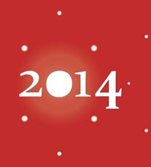December 2013
<< Previous Month Year view Next Month >>
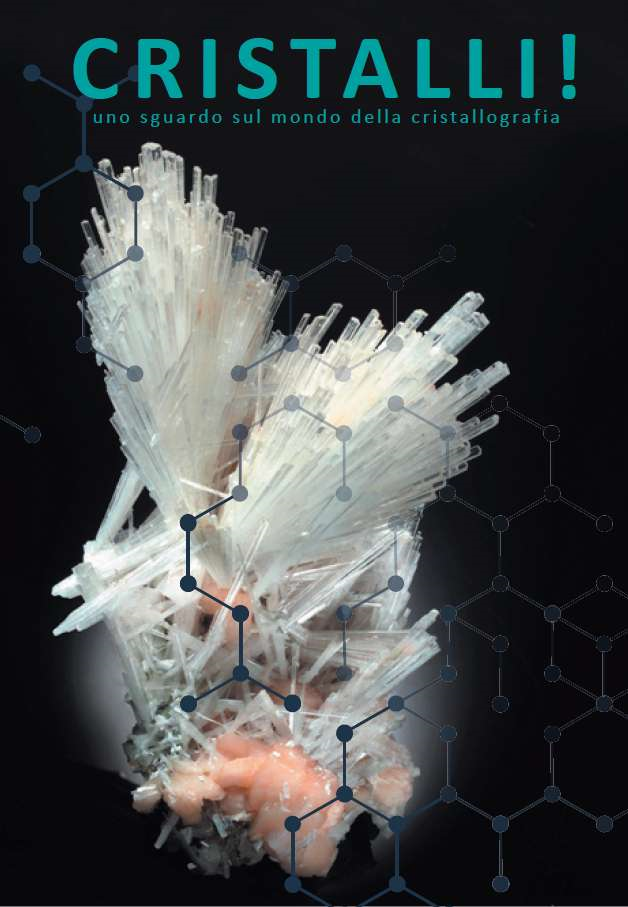
| Event Name | CRISTALLI! |
| Start Date | 6th Oct 2013 |
| End Date | 2nd Mar 2014 |
| Duration | 148 days and 1 hour |
| Description | Crystals - known to everybody as gems, snow crystals, or salt grains - are widespread in the nature around us. The investigation of their structure and properties means looking inside the intimate of atom geometries - a look contributing to the scientific development of chemistry, solid state physics, Earth sciences, and even, surprisingly, biology and medicine. A century has passed since the crystals first revealed their secrets. In the meantime crystallography has become the pillar of the atomic and molecular sciences, showing us the structure of DNA, allowing the comprehension and the development of computer memories, visualizing the formation of proteins within cells, and yielding ever new materials and drugs. This is why on July 2012, resolution 66/284 of the General Assembly of the United Nations declared 2014 - after 100 years from the awarding of the first Nobel Prize for the discovery of the diffraction of X-rays by crystals - the International Year of Crystallography. The exhibition organized at the University of Padova wishes to celebrate the theoretical and applied aspects of crystallography on the occasion of the International Year. See the photos of the exhibition taken during the Opening Ceremony on 5 October 2013 |
| Location | Padova Italy |
| Contact | Gilberto Artioli cristalli.centromusei@unipd.it |
| URL | http://www.geoscienze.unipd.it/cristalli/welcome.html |
| Category | exhibitions |

| Event Name | Crystals: Beauty, Science, Structure |
| Start Date | 7th Nov 2013 |
| End Date | 30th Mar 2014 |
| Duration | 144 days |
| Description | From gigantic and exotic cave formations to everyday ingredients such as salt and sugar, crystals are all around us. In our latest special exhibition – Crystals: Beauty, Science, Structure – we look at the history of the study of crystals, an endeavour which has prized their mysterious and natural beauty, as well as probed their fundamental atomic structures. In the middle ages, natural minerals were thought to carry occult properties, perhaps suggested by their startling array of colours and geometric forms. These regular forms promised a special insight into nature and from the 17th century onwards they were exactly measured and their symmetries exhaustively classified. At the turn of the 20th century even deeper secrets were illuminated by the ground-breaking technique of x-ray crystallography. Today, crystallography is the hidden science behind many aspects of our lives. This year, 2013, celebrates the centenary of the pioneering work of father and son William and Lawrence Bragg, which laid the foundations for the science of x-ray crystallography. The International Year of Crystallography takes place during 2014. |
| Location | Oxford Museum of History of Science United Kingdom |
| Contact | Mike Glazer glazer@physics.ox.ac.uk |
| URL | http://blogs.mhs.ox.ac.uk/mhs/crystals-beauty-science-structure/ |
| Category | exhibitions |
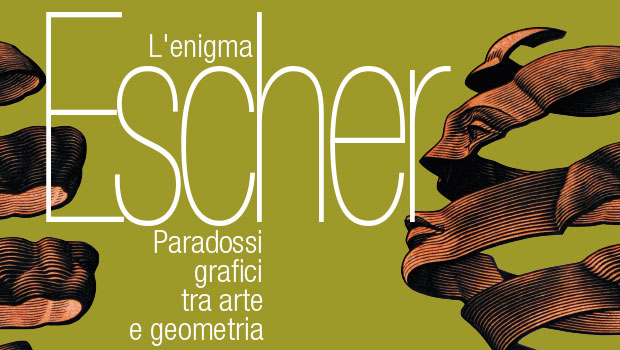
| Event Name | L'enigma Escher |
| Start Date | 19th Oct 2013 |
| End Date | 23rd Mar 2014 |
| Duration | 156 days and 1 hour |
| Description | “L’ENIGMA ESCHER- PARADOSSI GRAFICI TRA ARTE E GEOMETRIA” is the title of a major retrospective exhibition of the work of Maurits Cornelis Escher, on display in Reggio Emilia until 23 March 2014. The exhibition presents the work of the Dutch graphic artist from his debut on the scene to his latest years, bringing together 130 works, including lithographs, etchings and drawings, on loan from museums, libraries and national institutes – among which the Galleria d’Arte Moderna of Rome and the Fondazione Wolfsoniana of Genoa – as well as from some important, private collections. A special section is dedicated to tilings, with a panel illustrating the 17 crystallographic planar groups and some original examples of Escher's plane-filling drawings. The exhibition will then move to Caraglio (Cuneo, Italy), where it will be on display from 29 March to 29 June. The exhibition is included in the events for IYCr2014 celebrations in Italy. Read the press release mentioning the connection of the exhibition with IYCr2014 (in Italian)
|
| Location | Reggio Emilia Italy |
| Contact | Federica Franceschini f.franceschini@palazzomagnani.it |
| URL | http://www.palazzomagnani.it/2013/07/lenigma-escher/ |
| Category | exhibitions |
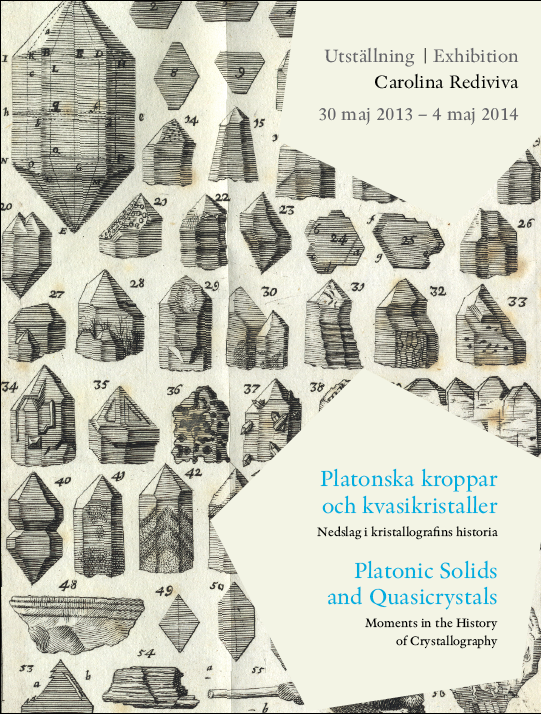
| Event Name | Platonic Solids and Quasicrystals - Moments in the History of Crystallography |
| Start Date | 30th May 2013 |
| End Date | 4th May 2014 |
| Duration | 340 days |
| Description | This year's exhibition at Carolina Rediviva, Platonic Solids and Quasicrystals, is all about crystallography and shows how this science has been perceived over time. By collaborating with the Museum of Evolution at Uppsala University, we can exhibit books side by side with real crystals, models of crystals and instruments that have been used to measure the angles of these strange formations that seem to have been cut and polished by human hand whereas in fact they have been shaped by uniform atomic structures. Welcome on a beautiful journey through this collection of historical scientific books and artifacts. |
| Location | Uppsala Sweden |
| Contact | Johan Kjellman johan.kjellman@em.uu.se |
| URL | http://www.ub.uu.se/en/Just-now/Exhibitions/Current-exhibitions/ |
| Category | exhibitions |

| Event Name | Two Braggs Public Lecture |
| Start Date | 3rd Dec 2013 7:00pm |
| End Date | |
| Duration | N/A |
| Description | Public lecture on the scientific and personal story of William Henry Bragg and William Lawrence Bragg presented by Mike Glazer, Emeritus Professor of Physics, Oxford University. |
| Location | Oxford United Kingdom |
| Contact | Mike Glazer glazer@physics.ox.ac.uk |
| URL | http://www.mhs.ox.ac.uk/ |
| Category | lectures |

| Event Name | AsCA 2013 Meeting |
| Start Date | 7th Dec 2013 |
| End Date | 11th Dec 2013 |
| Duration | 5 days |
| Description | The 12th Conference of the Asian Crystallographic Association will be held at the Hong Kong University of Science and Technology (HKUST), Hong Kong on 7-10 December 2013. The programme will feature three plenary lectures by Sine Larsen, Mike Zaworotko and Hideo Hosono and 18 micro-symposia spanning the field of crystallography from structural biology, crystal engineering to materials science. A special session will be dedicated to the International Year of Crystallography 2014 on Monday 9 December. This session will start with an introduction by Se-Won Suh, President of AsCA, a welcome speech by G.R. Desiraju, President of the IUCr, and an overview of on-going events by M. Zema, Project Manager for IYCr2014. Afterwards, the activities planned in the AsCA region for celebrating IYCr2014 will be introduced: Japan (M. Takata), Australia (B. Kobe), China (Zhi-Jie Liu), India (P. Chakrabarti), Others (J.J. Vittal and I. Williams). |
| Location | Hong Kong Hong Kong |
| Contact | Ian Williams ianduncanw@gmail.com |
| URL | http://asca13.ust.hk |
| Category | conferences |
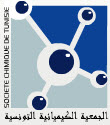
| Event Name | 6èmes Journées de Chimie de l'Etat Solide - JCS2013 |
| Start Date | 16th Dec 2013 |
| End Date | 18th Dec 2013 |
| Duration | 3 days |
| Description |
Les 6èmes Journées de Chimie de l'Etat Solide - JCS 2013 - sont des journées dédiées à la communauté des chimistes Tunisiens et étrangers pendant lesquelles les groupes de chercheurs peuvent présenter leurs travaux récents et innovants dans divers domaines de la chimie ayant trait à la chimie inorganique et générale. Tradition instaurées depuis l'année 2004, les Journées de Chimie du Solide ont pour objectifs de :
Nous espérons que cette manifestation sera également une occasion pour stimuler les échanges entre jeunes chercheurs et chercheurs confirmés des milieux académiques et industriels et contribuer à tisser des liens dans la communauté des chimistes tunisiens et étrangers.
|
| Location | Hotel Laico - Hammamet Tunisia |
| Contact | Habib Boughzala habib.boughzala@ipein.rnu.tn |
| URL | http://www.sctunisie.org/jcs2013/ |
| Category | conferences |
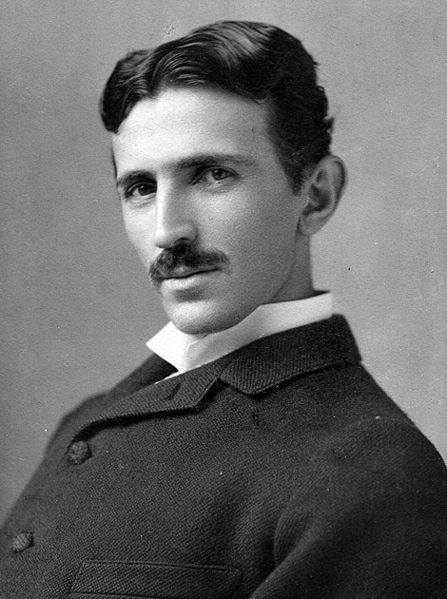
| Event Name | Scientific Legacy of Nikola Tesla |
| Start Date | 17th Dec 2013 9:00am |
| End Date | 17th Dec 2013 3:00pm |
| Duration | 6 hours |
| Description | Scientific Meeting The Scientific and Technological Legacy of Nikola Tesla organized by the Croatian Academy of Sciences and Arts, Zagreb, December 17, 2013
Nikola Tesla in Science – Discovery of X-rays Stanko Popović Croatian Academy of Sciences and Arts Physics Department, Faculty of Science, University of Zagreb, Croatia
ABSTRACT Scientific achievements and miraculous inventions have made Nikola Tesla, the Croatian inventor (The New Yorker 2013), world-famous. Here are several titles out of thousands of books and papers dealing with the life and work of Nikola Tesla that confirm the above statement: Prodigal Genius–The Life of Nikola Tesla (J. J. O'Neill, Ives Washburn 1944, Book Tree 2007); Tesla–Man out of Time (M. Cheney, Simon and Schuster 2001); The Man Who Invented the Twentieth Century–Nikola Tesla, Forgotten Genius of Electricity (R. Lomas, Headline 1999); Wizard–Biography of a Genius (M. Seifer, Citadel 2001); Tesla–Master of Lightning (M. Cheney et al., Barnes & Noble Books 1999); Nikola Tesla–The Man Behind the Magnetic Field Unit (A. Rougin, J. Magn. Reson. Imaging 2004); Inventor of Dreams (B. Carlson, Scientific American 2005); The Fantastic Inventions of Nikola Tesla (D. Childress, Adventures Unlimited Press 1993); Nikola Tesla–Physicist, Inventor, Electrical Engineer (M. Burgan, Minn. Compass Point Books 2009); Nikola Tesla and the Discovery of X-rays (M. Hrabak et al., RadioGraphics 2008). However, there are some statements about Tesla, given in certain papers, books and encyclopedias, which are not always correct. Some of the main scientific achievements and inventions of Nikola Tesla (not quoted chronologically) are: alternating current, generators of alternating current, polyphase system, rotating magnetic field, induction motor, electric power distribution and transmission, Tesla Columbus egg, Tesla transformer, wireless transfer of energy, radio remote control vehicle, teleforce, robot, radio, Tesla coil, bifilar coil, Tesla oscillator, current of high frequency and high voltage, lightning rods, arc light system, Tesla turbine, Tesla bladeless turbine, terrestrial stationary waves, telegeodynamics,electrogravitics,X-rays, electronic logic gate... Tesla also contributed much, theoretically and experimentally, in discovering and understanding of several fundamental notions and concepts in physics; however, other scientists were rewarded primacy for that in forthcoming years (V. Paar, 60th Anniversary of Death of N.Tesla, Croatian Academy of Sciences and Arts, 2004): papers on electron in 1891 (discovery of electron by J. J. Thomson in 1897); the idea on electron microscope in 1903 ( its construction by E. Ruska 1931-33), X-rays in 1894 (W. C. Röntgen 1895), accelerator of a beam of charged particles in 1891 (construction of cyclotron by E. Lawrence in 1932, linear accelerator by J. Cockroft and E. Walton in 1932), prediction of cosmic rays in 1897 (discovery of cosmic rays by V. Hess in 1912), concept of radar in 1903 (construction of radar in 1934-40), the idea of induced radioactivity in 1899 (experimental discovery by J. F. Joliot, I. Curie in 1934), radio transmission in 1898 (G. Marconi 1901), laser in 1893 ( construction of laser by C. Townes, N. Basov, A. Prochorov in 1953-57). When Guglielmo Marconi made his first ever transatlantic radio transmission in 1901, Tesla stated that he had already described that phenomenon in a series of his patents. In 1943 The Supreme Court of the United States decided to restore the priority of Tesla's patents. In 1960, in honor of Tesla, the General Conference on Weights and Measures for the International System of Units dedicated the term tesla, T, to the SI unit of magnetic field. Tesla was granted about 300 patents worldwide for his inventions. His patent specifications began like this: ''Be it known that I, Nikola Tesla, of Smiljan, Lika, border country of Austria-Hungary, residing at New York, have invented...'', or, ''Be it known that I, Nikola Tesla, a citizen of the United States, residing at New York, have invented...''. In 1892 Tesla visited Zagreb and presented a plan for the electrical illumination of the town. On December 17, 1896 Tesla was elected the honorary member of the Yugoslav (now: Croatian) Academy of Sciences and Arts, while on June 29, 1926 he was awarded the honorary doctorate by the University of Zagreb. Starting in 1894, Tesla experimented with mysterious shadowgraphs similar to those that later were studied by W. C. Röntgen (Encyclopedia Britannica; N. Tesla, Lecture before the New York Academy of Sciences 1897; 21st Century Books 1994). Tesla was aware of an unknown radiant energy of invisible kind (a very special radiation) that had damaged film in his laboratory in the previous experiments (M. Hrabak et al. 2008; M. Cheney 2001), later identified as Röntgen rays or X-rays. Unfortunately, much of his early research was lost when his lab in New York was burnt down on March 13, 1895. Röntgen published his discovery on November 8, 1895. In the beginning of 1896, after hearing of Röntgen's discovery, Tesla proceeded with his own experiments in X-ray imaging, designing a high energy unipolar vacuum tube that had no target electrode; the electrons were accelerated by peaks of the electrical field produced by the high-voltage Tesla coil. Tesla realized that the source of X-rays was the site of the first impact of electrons within the tube, which was either the anode in a bipolar tube or the glass wall in the unipolar tube. In his research, Tesla devised several experimental setups to produce X-rays, that were of much greater power than obtainable with ordinary apparatus. He stated that the cathodic stream was composed of very small particles (ie. electrons), and that the produced X-rays were also minute particles (later proved to be electromagnetic radiation quanta–photons). Tesla described his experiments in detail in a series of papers in Electrical Review New York, the first paper appearing in March 1896 (March 11, 18, April 1, 8, 22, July 8, Aug 12, Dec 1, 1896; May 5, Aug 11, 1897). Tesla sent his images to Röntgen shortly after he published his discovery. Although Tesla gave Röntgen full credit for his discovery, Röntgen congratulated Tesla on his sophisticated images, wondering how he had achieved such impressive results. Tesla commented on physiological hazards of working with X-rays and gave recommendations for protection (D. Di Santis, Early American Radiology, Am. J. Röntgenol. 1986). He also described some clinical benefits of X-rays: determination of foreign body position and detection of lung diseases, noting that denser bodies were more opaque to X-rays. He also experimented with reflected X-rays, using different materials as the reflecting surface, and described features of transmitted and reflected rays. Tesla realized that a sharp shadow of an object could be produced at a great object-film distance and with a short exposure time. Therefore, there is much evidence that confirm the legacy of Tesla in discovery of X-rays, starting with his papers in Electrical Review; his lecture before the New York Academy of Sciences in 1897 validated to some degree his primacy in research of X-rays. One will never know who would have won the Nobel prize for the discovery of X-rays if Tesla's work had not been lost in fire. The least one can do is to appreciate his pioneer work in this field (M. Hrabak et al. 2008). The nature of X-rays was finally unveiled by Max von Laue in 1912 who performed the experiment of diffraction of X-rays in a crystal. 22 references.
Picture of Nikola Tesla at top of page: Wikimedia Commons
|
| Location | Zagreb Croatia |
| Contact | Stanko Popovic spopovic@phy.hr |
| URL | http://www.hazu.hr |
| Category | lectures |
